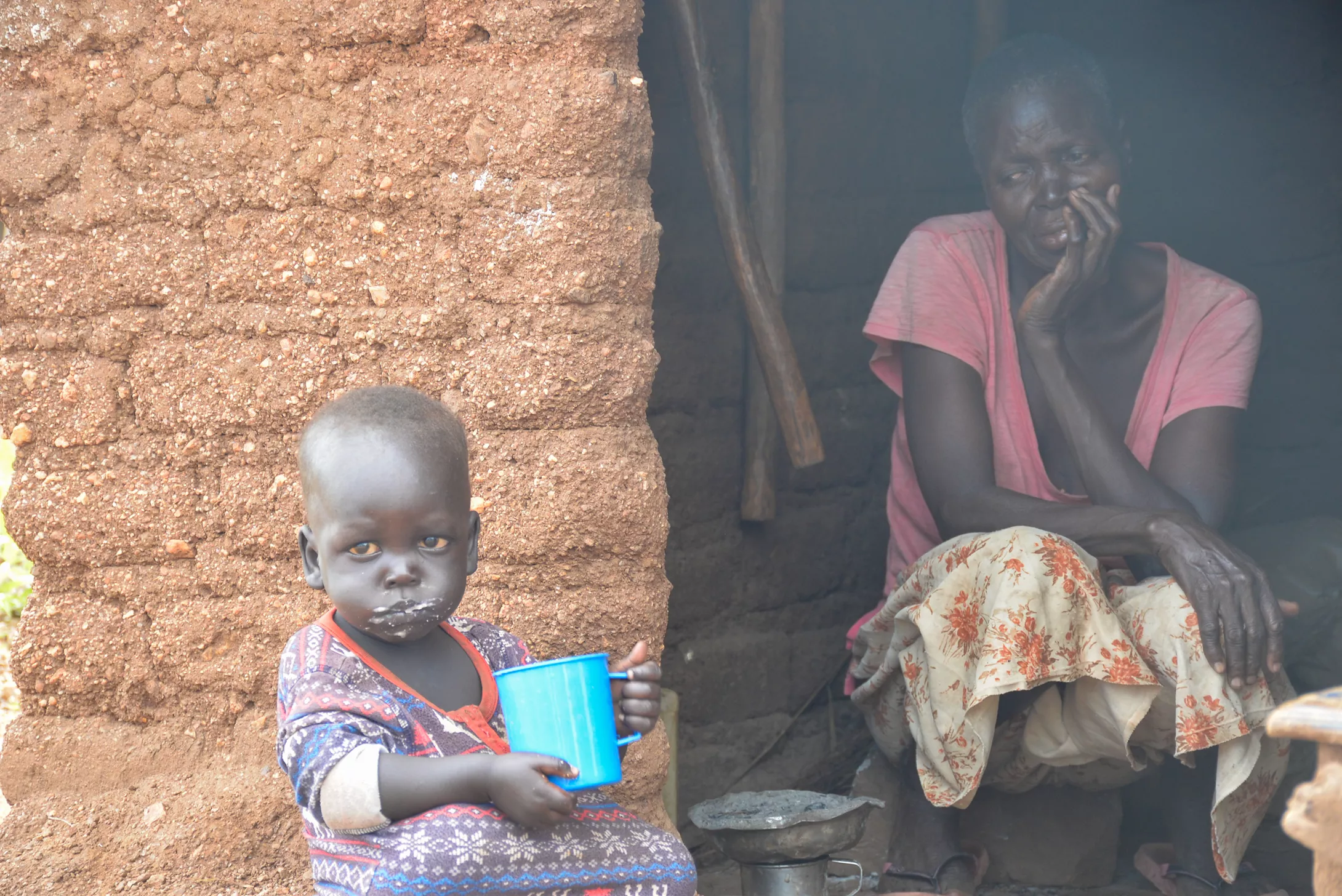Seven-year-old Evelyn and her family haven’t eaten anything in nearly 24 hours. Hunger has stripped them of all energy and even smiles. Evelyn’s little brothers sit near the kitchen door, eyes fixed on the cold cooking place, and the surrounding empty saucepans.
Their mother, 23-year-old Annet Rojo, is seated, legs stretched on the veranda, trying to breastfeed her wailing baby. Their father, 25-year-old James Moro, lost in thought, leans despondently against a huge water tank at the corner of the house. You can easily tell that he is thinking about where the day’s meal for his family is going to come from.
There is no life in this home. Children are not playing. No one is smiling and there is barely a word said for about a quarter of an hour. The only sound is the constant sobbing of Annet’s baby, every time he realises that the breast he is suckling yields nothing.







